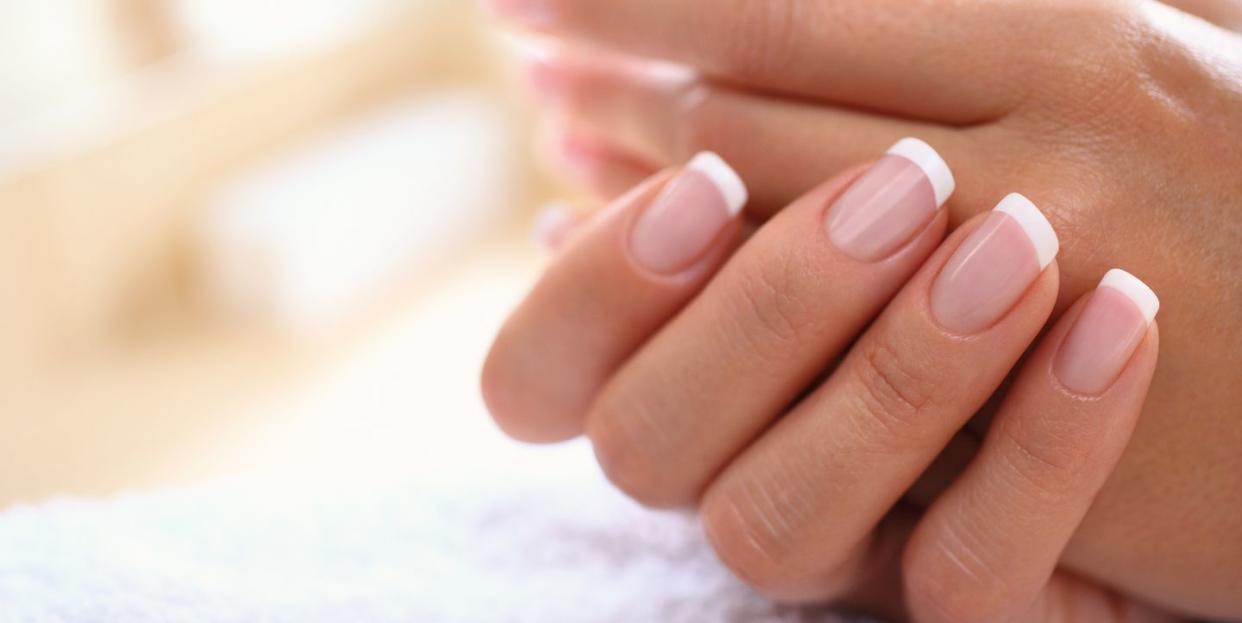A Pro Explains How to Safely Push Back Your Cuticles for a Flawless At-Home Manicure

Due to the coronavirus pandemic, you’ve probably gone several weeks without a pro manicure, and there’s a good chance you’re ready to take things into your own hands—literally—by giving your nails some TLC at home. You may be most familiar with filing, trimming, and picking out the perfect polish. But caring for your cuticles? That can be a bit intimidating.
It’s a meticulous process—and totally worth it if you’re looking to achieve a salon-inspired manicure at home. But while you might be tempted to pick that hangnail right off, it may do more harm than good, says celebrity nail stylist Elle Gerstein. The key is knowing exactly what to remove (and what not to remove) and applying a few products that will do wonders for your nail health.
Below, exactly what you need to know about caring for your cuticles at home—and the step-by-step process on how to do so safely.
What’s a cuticle, anyway?
First, a little nail anatomy lesson: “The cuticle is the white, flaky skin that gets attached to the nail bed,” Gerstein says. “The eponychium is where your skin ends, and the cuticle comes underneath that.” It can get confusing, though, because both terms are often used interchangeably.
Most of the time, people identify the eponychium (fun word, right?!) as the cuticle, but there’s a big difference in how you care for each part. While you’ll want to push back your cuticles when they grow longer, and then cut off the dead skin that’s hanging, you never want to cut the eponychium, Gerstein says.
“When the eponychium is cut, you open the nail plate and your skin starts peeling. It can lead to an infection,” she explains. That’s because that skin is specifically there to keep bacteria and other troublesome pathogens out of your body.
Hangnails, which form from improper nail growth, shouldn’t be pulled because that opens up the eponychium. If you’ve cut or pulled back the eponychium, you’ll most likely feel some pain and potentially see blood. “This means you’ve cut beyond the cuticle,” Gernstein says. “Stop and treat it like a wound. Clean it out with water, apply Neosporin to prevent infection, and keep it wrapped with a bandage.”
How to safely care for your cuticles at home
1. Invest in a cuticle remover.
First, trim and file your nails cleanly into your preferred shape. “Then, you’ll want to moisten your cuticle area with a cuticle remover,” Gernstein says, who recommends the Debra Lippman Cuticle Remover. This will loosen the cuticle off of the nail plate so you can determine what’s actually supposed to be pushed back or trimmed.
2. Then, push back gently.
Using a metal pusher, you can carefully push the cuticle toward the back end of your nail. “Afterwards, use soap and water to wash the cuticle remover off of the nail plate and cut whatever’s hanging,” Gerstein says. Remember, you only trim the dead excess skin (hangnails), nothing further. You should never cut all the way around the nail plate.
3. Apply a cuticle oil.
After you pushed back and trimmed your cuticles, slather them with a cuticle oil for extra nourishment. Gerstein recommends LeChat’s CBD Cuticle Oil. “I love that it has anti-inflammatory properties. It’s a great product for those with cuticle issues.”
She also likes the Bee Naturals Cuticle Oil, which is infused with hydrating vitamin E oil and antimicrobial tea tree. If you’re polishing, allow the oil to sink for a bit, then wash the excess of your hands with soap and water before you paint, otherwise you may get an uneven application and they’ll take forever to dry.
4. Don’t forget sunscreen.
Gerstein says it’s also important to apply sunscreen to your hands and nail area daily. “The eponychium can burn just as badly as the rest of your skin,” she says. Plus, you’ll avoid premature sun spots in the process.
Bottom line: Caring for your cuticles at home is totally doable, but if you feel confused about the anatomy of the nail or feel like you don’t have the right tools, it’s always safe to wait and see a pro.
Support from readers like you helps us do our best work. Go here to subscribe to Prevention and get 12 FREE gifts. And sign up for our FREE newsletter here for daily health, nutrition, and fitness advice.
You Might Also Like

